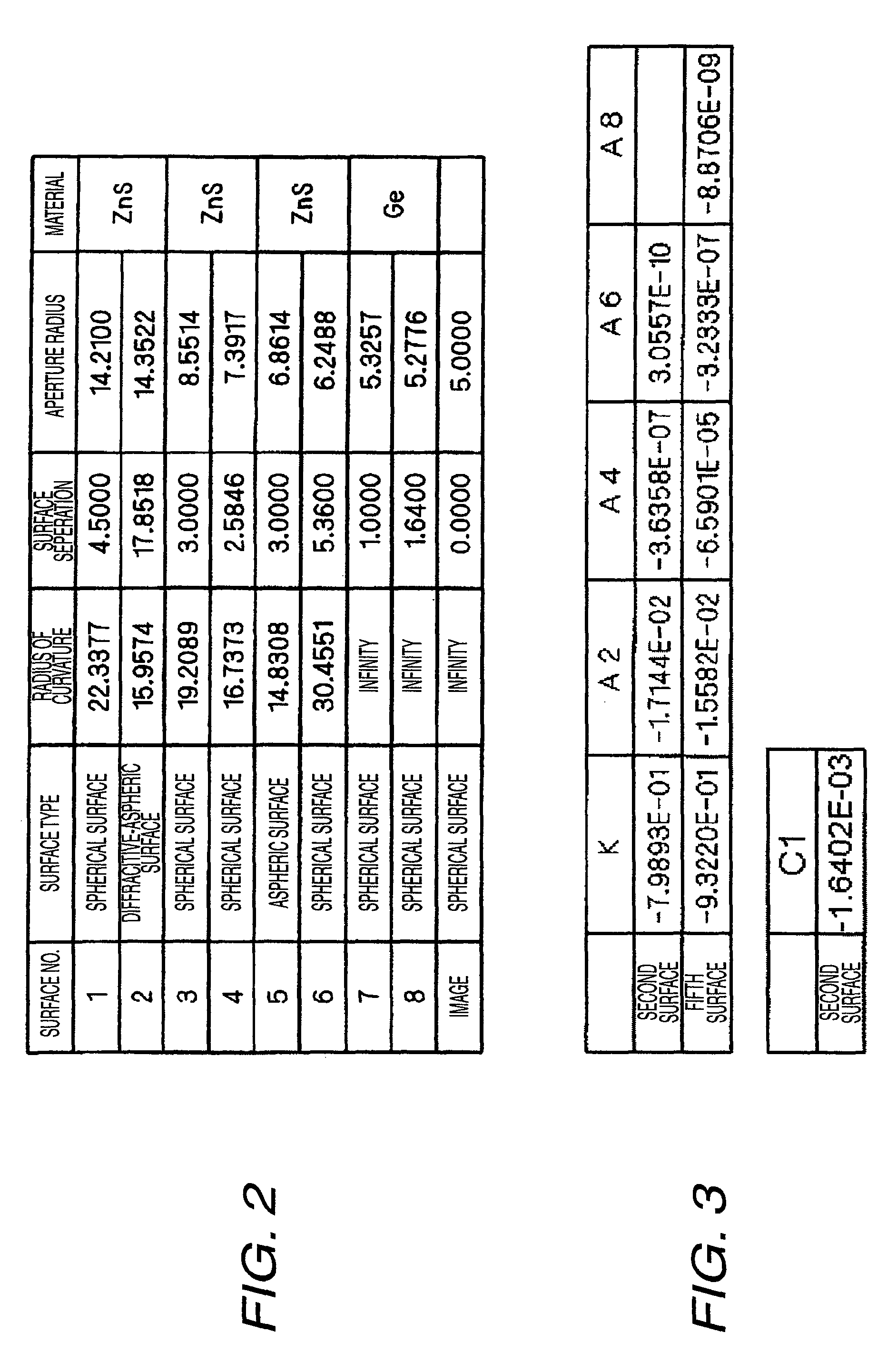Infrared lens, infrared camera, and night vision
a technology of infrared camera and infrared lens, which is applied in the field of infrared lens, can solve the problems of poor imaging performance, high processing cost, and concern of increasing distortion in wide angle region, so as to minimize the thickness of the respective lens, improve imaging performance, and minimize light loss
- Summary
- Abstract
- Description
- Claims
- Application Information
AI Technical Summary
Benefits of technology
Problems solved by technology
Method used
Image
Examples
embodiment 1
Basic Configuration
[0212]Hereinafter, a basic configuration of an infrared lens according to Embodiment 1 of the invention will be described with reference to FIG. 1. In this section, it will be described about only the basic configuration of the infrared lens 1a shown in FIG. 1, and a further detailed configuration thereof will be described as Example in the following section.
[0213]The infrared lens 1a including first to third lenses L1 to L3 which are made of zinc sulfide are arranged in this order from an object side as shown in FIG. 1. The first to third lenses L1 to L3 are configured as a positive meniscus lens of which convex surfaces are opposed to the object side, and these first to third lenses L1 to L3 are configured as the first to third lenses' groups relating to the invention, respectively. Light (infrared rays) transmitted through lenses L1 to L3 is incident on an acceptance surface of an imaging device Id through an infrared transmission window Fi, and the light forms...
example 1-1
[0233]The infrared lens 1a according to Example 1-1 have configurations illustrated in the FIGS. 1 to 3, and the lenses are configured that the f1 / f is 1.10, the F value is 1.1, the maximum diameter is 28.4 mm, and the view angle is 17° (the view angle is set in the combination case where the imaging device has a pixel pitch 25 μm and a pixel size 320×240). The aspheric surface shape (diffractive surface shape) of a second surface and a fifth surface shown in FIG. 3 is determined by substituting the parameter into the following expression (ditto below):
[0234]Z(y)=y2R1+1-(1+K)y2R2+A2·y2+A4·y4+A6·y6+A8·y8+…+Φ(y)[NumericalFormula1]Φ(y)=1N-1·mod(C1·y2,-λ)[NumericalFormula2]
[0235]In the formula, the Z is a length (mm) of a perpendicular line down on the tangential surface in contact with the top of the aspheric surface from a point on the aspheric surface, the y is a height (mm) from an optical axis, the K is an eccentricity, the R is a near-axis curvature radius,...
example 1-2
[0238]The infrared lens 1b according to Example 1-2 have configurations illustrated in FIGS. 15 to 17, and the lenses are configured that the f1 / f is 1.40, the F value is 1.0, the maximum diameter is 25.9 mm, and the view angle is 20°.
[0239]MTF characteristics with respect to wavelengths 8 μm, 10 μm, and 12 μm within view angles (0°, 6.0°, 7.5°, and 8.5°) in the configuration of Example 1-2 are illustrated in FIGS. 18 to 24. Additionally, the spherical aberration, astigmatism, distortion, and longitudinal aberration characteristics with respect to the wavelengths 8 μm, 10 μm, and 12 μm are illustrated in FIGS. 25 to 27 and FIGS. 28(a) to 28(e).
PUM
 Login to View More
Login to View More Abstract
Description
Claims
Application Information
 Login to View More
Login to View More - R&D
- Intellectual Property
- Life Sciences
- Materials
- Tech Scout
- Unparalleled Data Quality
- Higher Quality Content
- 60% Fewer Hallucinations
Browse by: Latest US Patents, China's latest patents, Technical Efficacy Thesaurus, Application Domain, Technology Topic, Popular Technical Reports.
© 2025 PatSnap. All rights reserved.Legal|Privacy policy|Modern Slavery Act Transparency Statement|Sitemap|About US| Contact US: help@patsnap.com



